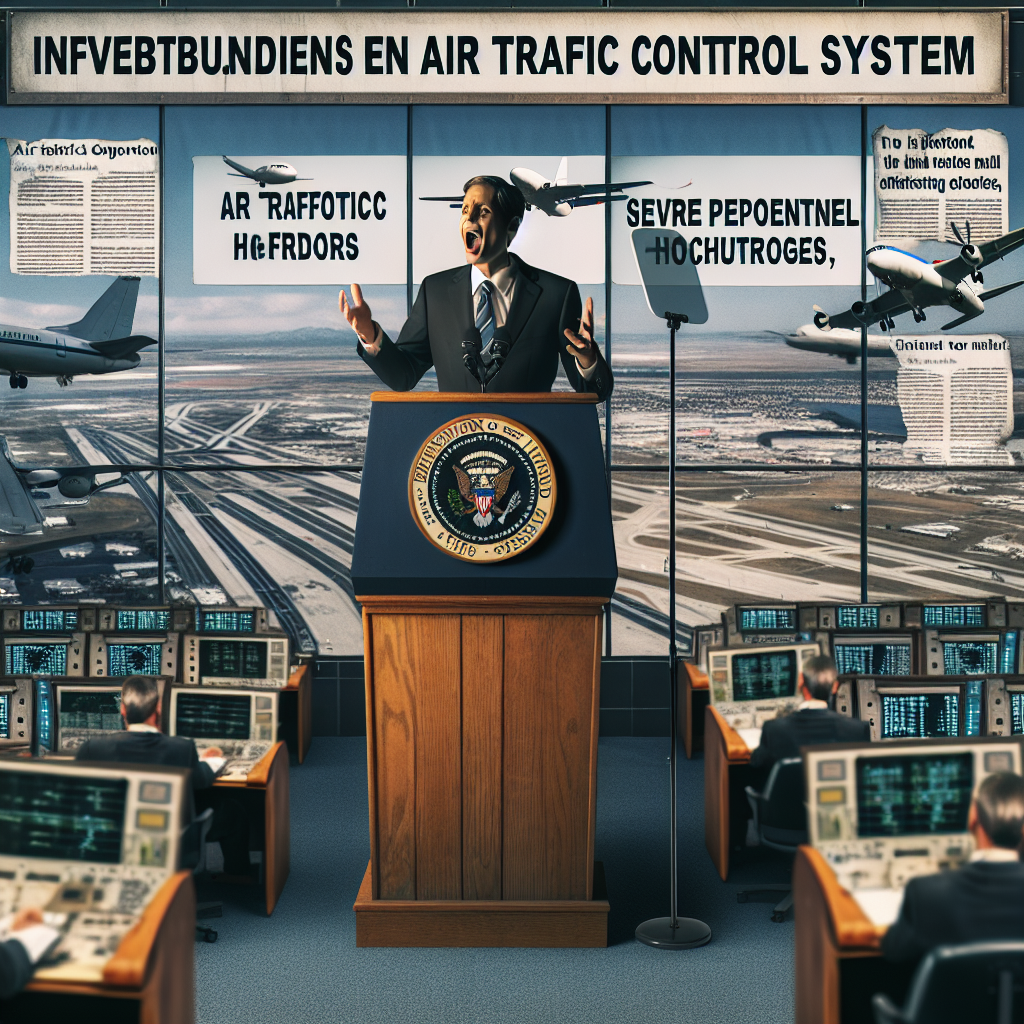The US Transportation Secretary Sean Duffy urged on Thursday (May 8th) to invest billions of dollars to thoroughly reform the overburdened air traffic control system in the United States, in order to address issues such as aging infrastructure, severe personnel shortages, and outdated technology.
On Thursday, Duffy, along with the chief executive officers of the five major US airlines, will unveil a plan by the Trump administration. He indicated that the plan is expected to take three to four years to implement.
Duffy stated, “Everything needs to be done afresh, including hardware and software.”
The air traffic control network of the Federal Aviation Administration (FAA) has long been plagued by various issues, with numerous accidents and incidents drawing attention, prompting calls for reform.
Repairing this system is a daunting task.
A critical aspect is technological issues. Many of the 520 airports regulated by the FAA in the United States require new runway safety technology so that controllers no longer have to rely on binoculars to observe aircraft.
In 2022, the FAA attempted to end a decades-old practice of air traffic controllers using paper flight strips to track aircraft, but to achieve this transition at 49 major airports, the work is expected to continue until the end of 2029.
The Government Accountability Office (GAO) stated in September last year that the FAA must take “emergency action” to address the problems of the aging air traffic control system. Out of the FAA’s 138 air traffic control systems, 51 are unable to sustain operations. The FAA informed the GAO not to plan on completing many system modernization projects for at least a decade.
In November 2023, an independent group at the FAA released a report stating that the agency’s air traffic communication system has been outdated for years, and that the agency can no longer obtain spare parts for many systems. The report mentioned aging FAA air traffic facilities, leaking roofs, damaged elevators, heating and air conditioning systems, and old surveillance radar systems that need urgent replacement, with replacement costs reaching billions of dollars.
Additionally, the issue of staffing in air traffic control also needs urgent resolution. The FAA has not yet reached its target staffing levels, with a shortage of around 3,500 air traffic controllers, almost all control towers facing personnel shortages. Despite a significant increase in recruitment numbers in recent years, the staffing of FAA controllers has remained largely unchanged in recent years, even decreasing by 10% compared to 2012, as some personnel have not retired or trained as required.
Last week, due to telecommunications and radar malfunctions, air traffic controllers at Newark Liberty International Airport lost contact with aircraft for at least 30 seconds. Subsequently, several controllers took leave on the same day, leading United Airlines to reduce 35 daily flights from Newark, accounting for 10% of its flight schedule.
At many airports, controllers are forced to work overtime up to 12 hours a day, six days a week, to compensate for understaffing.
In March, the FAA announced plans to recruit 2,000 air traffic controller trainees this year and to provide a one-time payment to controllers who meet retirement criteria but have not reached the mandatory retirement age of 56, amounting to 20% of their base salary, paid out yearly.
In 2017, then-President Donald Trump called for the privatization of the air traffic control system by 2020, but due to complex political circumstances, his idea was not implemented. Eight years ago, he lamented, “Our air traffic control system painfully remains stuck in the past… We are still bound by an aging, decrepit, outdated, and dysfunctional system.”
(This article was adapted from a report by Reuters)

